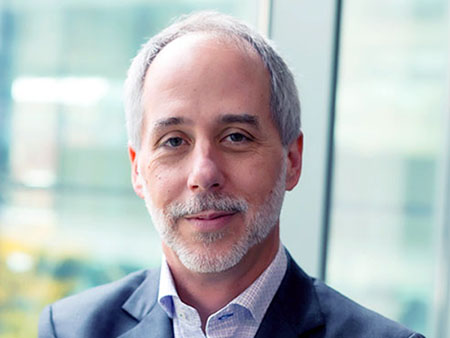 Jeff Holmes, M.D., Ph.D.The University of Alabama at Birmingham’s School of Engineering dean, Jeff Holmes, M.D., Ph.D., along with a colleague from the University of Virginia, has received a $2.6 million grant from the National Institutes of Health titled “Multiscale Models for Predicting Short and Long-term Outcome of Cardiac Resynchronization Therapy.”
Jeff Holmes, M.D., Ph.D.The University of Alabama at Birmingham’s School of Engineering dean, Jeff Holmes, M.D., Ph.D., along with a colleague from the University of Virginia, has received a $2.6 million grant from the National Institutes of Health titled “Multiscale Models for Predicting Short and Long-term Outcome of Cardiac Resynchronization Therapy.”
“The goal is to customize a recently developed therapy for heart failure patients,” said Holmes, co-principal investigator of the study. “There used to be no treatment for heart failure other than a transplant; but when it works, this therapy — called Cardiac Resynchronization Therapy or CRT — can reverse the progression of heart failure.”
The project, which includes researchers from Siemens, will build patient-specific models of the response to CRT, which in current studies works for a little over half the patients treated, but not for others. The long-term goal of the project is to improve outcomes by helping cardiologists customize treatment for individual patients.
“We began working on this a decade ago,” Holmes said. “The real challenge is that there are so many places the pacemaker wires — called leads — can be placed, and so many different electrical patterns that can be used to stimulate the heart. We believe that customizing these features to account for scar tissue from prior heart attacks and other individual features can improve CRT response, but there are too many options to test by trial and error.”
Holmes says that is where the computer models will come in, utilizing information collected before the actual procedure to predict in advance which pacemaker configurations and settings will be most effective for a particular patient. “Computer models have gotten really good at predicting what will happen on day one,” Holmes said. “The most exciting part of this project is that we are now starting to predict what will happen in months or even years in response to a treatment.”
Previous work demonstrated the ability to match the average responses reported in prior studies. Holmes and researchers are in the second phase of the research — specifically predicting the outcomes of individual patients following six months of treatment. The main factors to be considered are the location of scar tissue and the current pattern of contraction of the heart. The next phase will add another important factor, what medicines the patients are taking — which can also influence the growth of the heart and response to CRT.
Holmes says one of the most important features of the models they are developing is that they are fast — requiring less than a second to run on a standard laptop — raising hopes that, if this study succeeds, physicians might one day use their approach for routine clinical care.